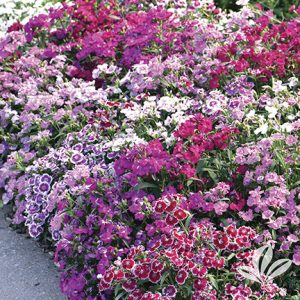 Perennials are the backbone of a thriving garden. These hardy plants return year after year, rewarding gardeners with dependable color, texture, and structure. With just a little attention to the basics—planting, watering, and fertilizing—perennials can flourish for seasons to come. Whether you’re a beginner or a seasoned green thumb, here’s a simple guide to keep your perennial garden healthy and beautiful.
Perennials are the backbone of a thriving garden. These hardy plants return year after year, rewarding gardeners with dependable color, texture, and structure. With just a little attention to the basics—planting, watering, and fertilizing—perennials can flourish for seasons to come. Whether you’re a beginner or a seasoned green thumb, here’s a simple guide to keep your perennial garden healthy and beautiful.
1. Planting Perennials: Starting Off Right
Proper planting sets the stage for long-term success. When and how you plant perennials matters just as much as the variety you choose.
Choose the Right Spot
Before digging, know your plants. Some perennials prefer full sun, while others thrive in shade or partial shade conditions. Refer to the plant tag or description to determine the specific light, soil, and spacing requirements. Grouping plants with similar needs will make care much easier in the long run.
Prepare the Soil
Good soil is key to healthy roots. Most perennials prefer well-draining soil rich in organic matter. Mix in compost or aged manure to improve texture and fertility. If you’re dealing with heavy clay or sandy soil, amend it accordingly to enhance drainage and moisture retention.
Planting Tips
Dig deep and wide: Dig a hole twice as wide as the plant’s root ball and about the same depth.
Loosen roots: Gently loosen tangled roots before planting to encourage outward growth.
Backfill and water: Place the plant in the hole, backfill with soil, and water thoroughly to eliminate air pockets.
Mulch: Add a 2- to 3-inch layer of mulch around the base of the plant to retain moisture and suppress weeds—just keep it a few inches away from the crown of the plant to prevent rot.
2. Watering: Keeping the Balance
Watering is a bit of an art form. Too much, and roots can rot. Too little, and plants wilt or fail to thrive. The goal is to keep the soil consistently moist—not soggy—especially during the plant’s first year.
Initial Watering
Newly planted perennials require regular watering as they establish themselves. Water deeply every few days for the first several weeks. Once established, they will need less frequent watering.
Long-Term Watering
Deep, infrequent watering is better than frequent, shallow watering. It encourages deeper root growth and stronger plants.
Early morning is the best time to water, as it reduces evaporation and allows foliage to dry during the day.
Use soaker hoses or drip irrigation for efficient watering, avoiding wetting the foliage, which can lead to disease.
Know When to Water
Stick your finger into the soil about two inches deep. If it feels dry, it’s time to water. Keep an eye on plants during periods of drought or extreme heat, and adjust your schedule accordingly.
3. Fertilizing: Feeding for Growth
Perennials don’t need as much fertilizer as annuals, but they do benefit from regular feeding to maintain vigor and blooms.
Choose the Right Fertilizer
Balanced fertilizers, such as 10-10-10, work well for general feeding.
Organic options, such as compost tea, fish emulsion, or slow-release plant food, are gentle and improve soil health over time.
When to Fertilize
Apply fertilizer in early spring as new growth begins.
For repeat-blooming or heavy feeders, you may apply a second feeding in mid-summer.
Avoid late-season fertilizing, as it can encourage tender growth that may not survive the winter.
How to Apply
Always follow the package instructions to avoid overfeeding.
Scatter granular fertilizer around the root zone—not directly against the stem—and water it in.
For liquid fertilizers, mix according to label directions and apply with a watering can or hose-end sprayer.
Bonus Tip: Deadheading and Dividing
While planting, watering, and fertilizing are the foundations of perennial care, don’t forget about deadheading (removing spent flowers) to promote reblooming and tidiness. Additionally, many perennials benefit from being divided every few years to rejuvenate growth and prevent overcrowding.
Final Thoughts
Perennials are a rewarding and cost-effective addition to any landscape. With the right planting techniques, a smart watering routine, and appropriate feeding, these plants will thrive and return stronger each year. Investing time in these basic care practices will keep your garden colorful, healthy, and full of life for seasons to come.
Whether you’re filling in flower beds, creating borders, or crafting a pollinator-friendly oasis, taking good care of your perennials is the key to long-term garden success.


